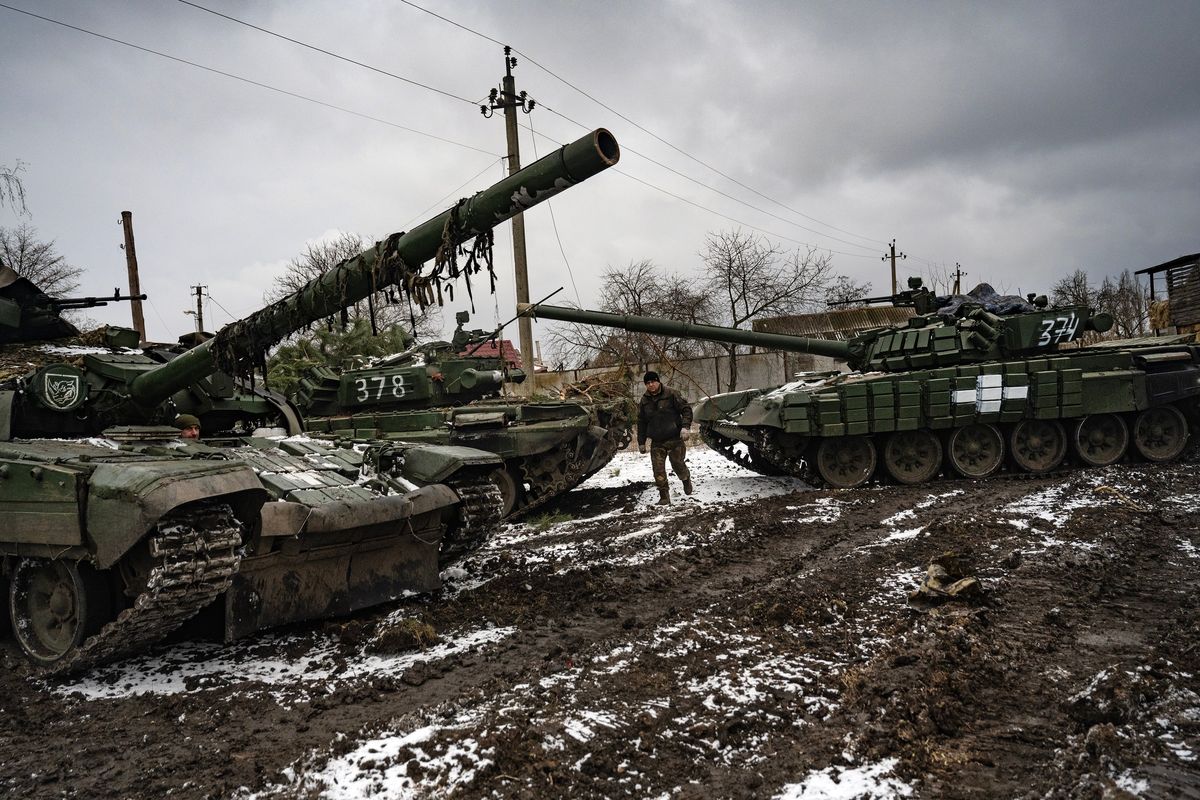Moscow’s forces advance only a few hundred meters a week, U.K. says

KYIV, Ukraine – As Russia makes slow, bloody gains in a renewed push to capture more of eastern Ukraine, it is pouring ever more conscripts and military supplies into the battle, Ukrainian officials say, although it remains far from clear that Moscow could mobilize enough forces to sustain a prolonged offensive.
The Ukrainian military said Tuesday that Russian forces were attacking in five different directions along the crescent-shaped front line in the east, relying on masses of troops to try to overrun Ukrainian positions. The tactic has allowed Russia to make incremental gains in recent weeks and to slowly tighten a noose around the key Ukrainian-held city of Bakhmut, but at a cost of hundreds of dead and wounded soldiers each day, according to U.S. officials.
“The major threat is the quantity,” Serhiy Haidai, the Ukrainian governor of the eastern region of Luhansk, told Ukrainian television Tuesday. “It is a huge monster that is at war with us, and it owns immense resources – not endless, but still. There are too many of them.”
He said the day before that a “full-scale offensive” could begin after Feb. 15, as the Kremlin strains to show progress around the one-year mark of its invasion.
Ukraine’s military intelligence agency has been warning that Moscow plans to mobilize as many as half a million more soldiers to sustain its campaign. That would be “in addition to the 300,000 mobilized in October 2022,” Vadym Skibitsky, Ukraine’s deputy intelligence chief, wrote in a lengthy statement released Monday night assessing the state of the war.
But Western intelligence officials have questioned whether President Vladimir Putin of Russia could quickly find hundreds of thousands more soldiers without triggering a greater domestic backlash. The Kremlin is already struggling to train and arm the soldiers it does have, military analysts have said.
Britain’s defense intelligence agency said Tuesday that Russia had been trying to launch “major offensive operations” since early last month, with the aim of capturing the rest of the Donetsk region, which includes Bakhmut. But it had “only managed to gain several hundred meters of territory per week,” because of a lack of munitions and maneuver units, the agency said in its latest daily assessment of the war.
“It remains unlikely that Russia can build up the forces needed to substantially affect the outcome of the war within the coming weeks,” the agency concluded.
Still, that hasn’t stopped Ukraine from sounding the alarm about a massive Russian buildup to come, as it agitates for more powerful weapons from the West. It first predicted that Russia would mobilize 500,000 new soldiers in January, a move that has not materialized.
The Kremlin continued to insist it was making progress in eastern Ukraine. Russia’s defense minister, Sergei K. Shoigu, told reporters that combat operations near Bakhmut and the town of Vuhledar, 60 miles to the south, “are developing successfully,” the official Tass news agency reported.
While Moscow’s willingness to sacrifice large numbers of soldiers for only marginal gains has been demonstrated time and again over the course of the war, Putin has been reticent to publicly announce a second wave of mobilization. The announcement of a partial mobilization in Russia in September led hundreds of thousands of fighting-age men to flee the country.
Putin, according to analysts at the Institute for the Study of War, a research group, has repeatedly chosen options for his war effort that he considers less domestically risky, only announcing a partial mobilization after a series of setbacks in Ukraine.
Moscow’s latest push along the eastern front has relied upon inexperienced new recruits and former convicts to rush toward Ukrainian positions, straining Ukraine’s forces but also producing heavy casualties. A Russian opposition publication, Mediazona, has said that fewer Russian prisoners are willing to sign up for combat because of reports of high casualties among penal colony recruits.
Haidai said Tuesday that Ukrainian officials had observed Russian commanders keeping newly arriving units of freshly mobilized soldiers separated from each other. The reason, he said, was to keep word of losses in the Russian ranks from spreading.
“They have a huge number of dead and wounded, and the commanders are trying to prevent panic among fighters in this way,” Haidai said.
This article originally appeared in The New York Times.